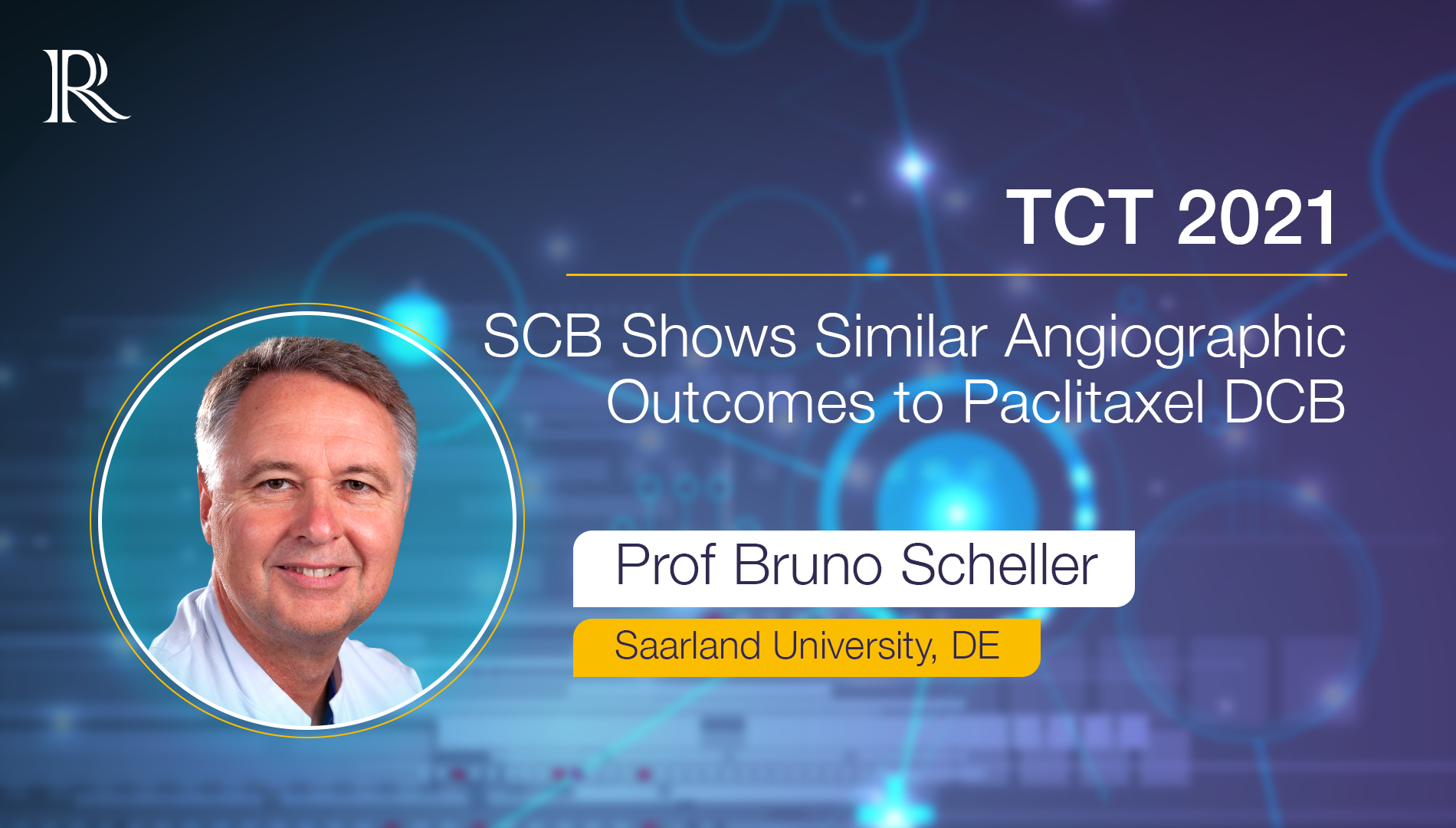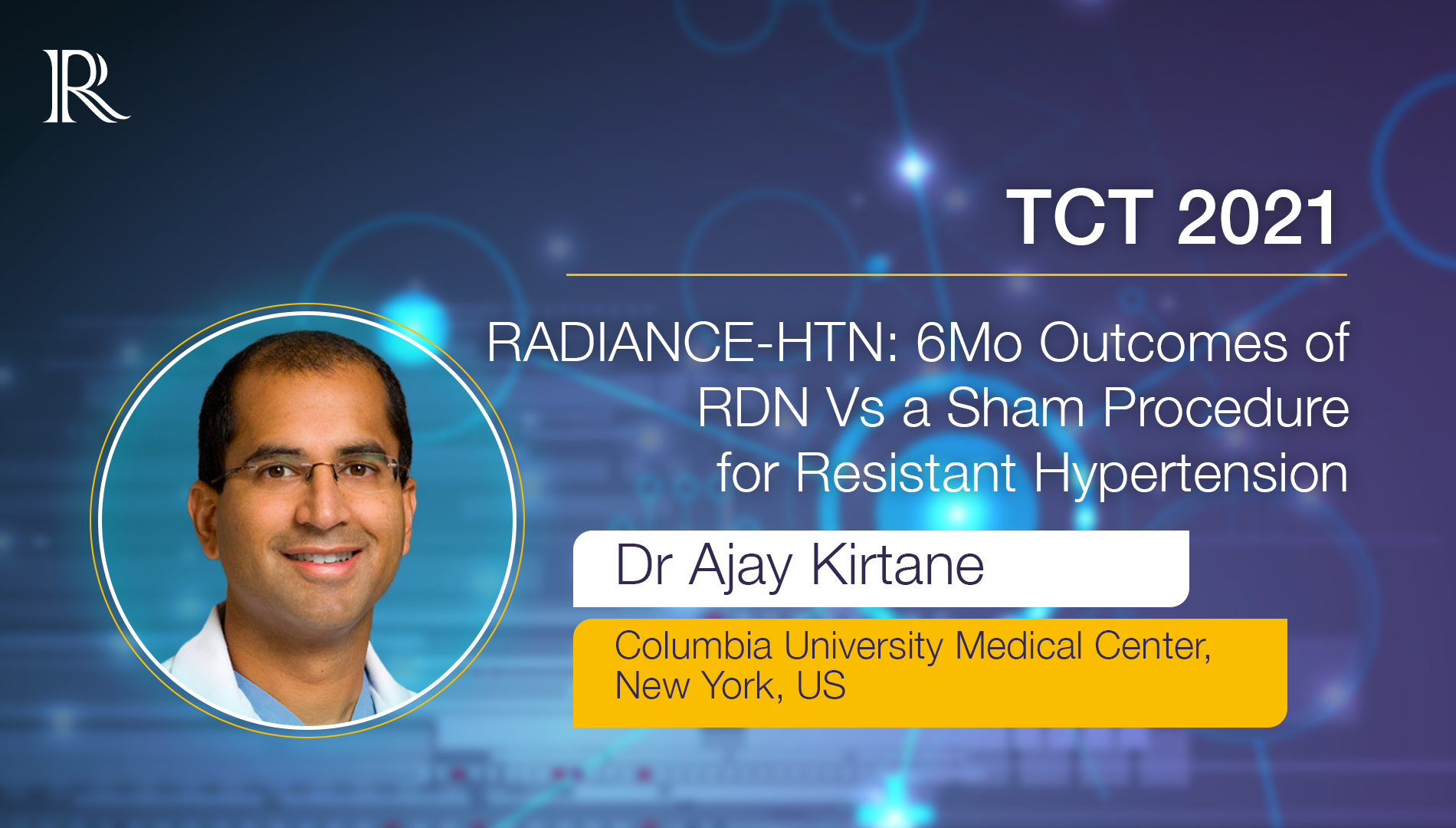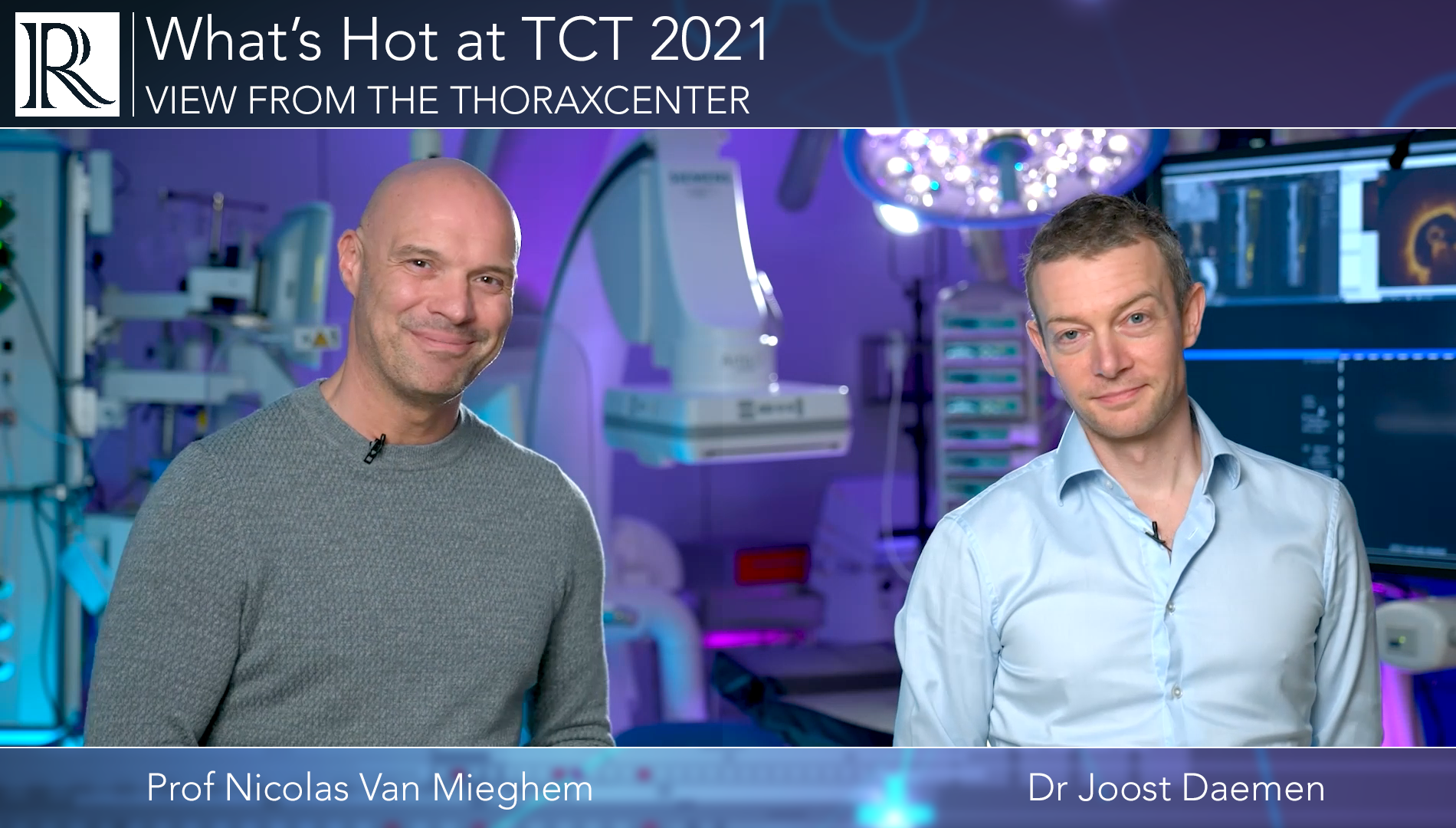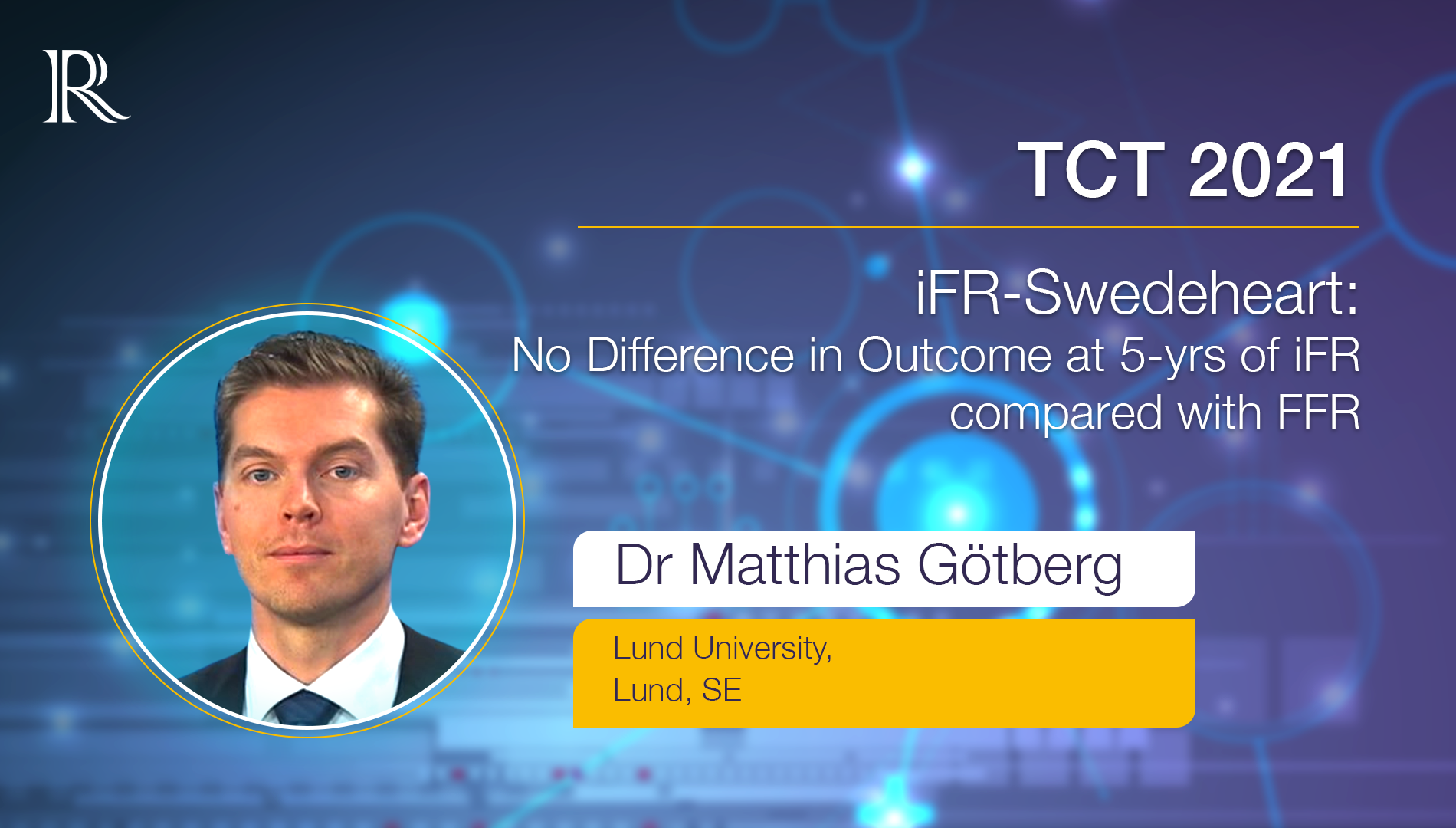- Hi, my name is Susheel Kodali, I'm a associate professor at Columbia University in New York and the Director of the Structural Heart and Valve Centre, along with my colleague, Dr. Isaac George.
The Evoque Device
- So the Evoque is a transcatheter tricuspid valve replacement. It's a self-expanding nitinol frame, that has a bioprosthetic valve made of bovine pericardial tissue within it. The device is designed to be delivered transfemorally, via 28 French delivery system. And basically the way the device works is, a wire is placed with the RV apex, the device is advanced into the right ventricle and the valve is slowly exposed. Initially exposing some anchors which engage with the valve and the annulus. And then the device is fully deployed. There are currently three sizes: 44, 48 and 52, and then I said everything is done percutaneously.
Patient Recommendations
Clearly transcatheter therapies for tricuspid regurgitation is an unmet need. There are a lot of patients out there, We know that severe TR results in worse outcomes. These patients generally do not get offered surgery. One, because the indications are not clear. And two, the surgical risks are much higher. Over the last decade there've been numerous devices that have been looked at for, as possible transcatheter therapies. There are devices for transcatheter edge to edge repair that are in pivotal trials, and those devices have worked, but they have some limitations, anatomic, meaning the gaps are too big. The location of the jet is difficult to engage. Pacemaker leads are in the way, and other considerations. And especially in those patients, transcatheter tricuspid valve replacement may be a better option, or it may be a better option for the entire cohort, but that's what these ongoing trials are designed to show. But the trial is designed for patients with severe TR that are symptomatic despite optimal medical therapy.
Aims of TRISCEND II
The main question is, does fixing and eliminating tricuspid regurgitation, and that's one of the things that I try to mention earlier, replacement versus repair techniques. Replacement really eliminates TR, whereas replacement, the goal is often to reduce TR. And the question that the, Triscend II pivotal trial is compared to medical therapy, does replacing the tricuspid valve and eliminating tricuspid regurgitation improve patient outcomes? And that includes both freedom from hospitalisation, mortality, quality of life, six minute walk and all of those endpoints. And does replacement improve those endpoints?
Key Findings
So this study that I presented is the results from the EFS. And this included- You know, the EFS was designed to sort of- before the pivotal trial, to give learnings, to sort of design the pivotal trial. And in this study, there were 132 patients that underwent transcatheter, tricuspid valve replacement with the evoque system. And this was a mixed group of patients. There are a lot of different indications and they all majority. 80. Majority had severe TR. The aetiology of the TR was varied. It was functional in 70%, it was degenerative in about 7% and mixed in the remainder. About a third of the patients had a prior pacemaker, and this was a comorbid population, mean age was 79. The majority were female, they're all felt to be high risk for surgical intervention. The presence of co-morbidities was very high: chronic kidney disease, and over half pulmonary hypertension, in more than three quarters prior surgery in a significant majority of patients, 20% had prior CABG and 38% had prior valve intervention. So very elderly comorbid population. And this patient population, all procedures, as I said, were done percutaneously via transfemoral approach. The majority would be of the right femoral vein, the remainder via the left femoral vein. Procedural succ- Device success whilst the delivery system was advanced, the valve was deployed and the delivery system was retrieved, was 96%. There were five times where the device could not be implanted. The hospital outcomes were good. The median length of stay was three days, and the majority of patients were discharged to home. And more than 90% were discharged to home. The, when you look at the major adverse events Out of. The larger. 30 days, out of the larger cohort, there were three cardiovascular mortalities, and the main adverse event were bleeding events. And this occurred in 22 patients or 17.7%. The majority of these bleeding events were related to the comorbidities of the patients. There were some vascular events, but many of them were epistaxis, GI, and other reasons why patients bled. And you see this in this, in patients with tricuspid regurgitation. They often have a coagulopathy, and even when you look at the medically managed group of these patients, there were a lot of bleeding events. But the one thing that we did see is the device worked. It eliminated TR in the vast majority of patients, when you look at the TR severity at discharge, the 97% had mild or non trace, and 60% were non trace. There was a 3% moderate. When looked at six months, everybody had mild or none trace TR and this represented a significant reduction. And at six months, 98% of patients had more than a two grade reduction in TR on the more expansive scale, including massive and torrential. And then when you looked at the longer term outcomes, the survival at six months by Kaplan-Meier estimates was 96%, freedom from rehospitalisation at six months by Kaplan-Meier estimates was 94%. And these patients had a dramatic improvement in functional and quality of life. Their NYHA class at the baseline, the majority, 75%, were class three or four. At six months, 89% were class one or two. Their six-minute walk times improved significantly, by about 56 metres from 199 to 256. And the KCCQ improved dramatically, 27 points. And a five point increase in KCCQ is considered significant. A 27 point increase is very dramatic and the KCCQ increased from 49 to about 75. So these studies show that the transcatheter delivery was feasible patients, in the vast majority of patients, cardiovascular and procedural mortalities were very low. And patients had a significant improvement in NYHA class, KCCQ and six minute walk distance.
Next Steps
So this was an EFS study. So it demonstrated the feasibility of this approach. It demonstrated some clinical benefit, but at this point we still need to show in a randomised fashion that compared to medical therapy, that this, this device works. And we need to sort of look at it in a larger, multicenter trial. And so the randomised Triscend II trial is underway and hopefully we'll get results within several years. And this therapy can be demonstrated to improve clinical outcomes.
TCT 2021: Late-breaking Science Video Collection
Published: 09 November 2021
-
Views:
 2269
2269
-
Likes:
 7
7
-
Views:
 2269
2269
-
Likes:
 7
7
-
 Up Next
Up Next -
 8m 8sPart 2 | Session 6 SCB Shows Similar Angiographic Outcomes to Paclitaxel DCB
8m 8sPart 2 | Session 6 SCB Shows Similar Angiographic Outcomes to Paclitaxel DCB -
 3m 37sPart 2 | Session 7 Intrepid TMVR: Results Show Improved NYHA Class at 30 Days
3m 37sPart 2 | Session 7 Intrepid TMVR: Results Show Improved NYHA Class at 30 Days -
 6m 43s
6m 43s -
 4m 44s
4m 44s -
 4m 28sPart 2 | Session 10 BIO-RESORT: 5Y Outcomes
4m 28sPart 2 | Session 10 BIO-RESORT: 5Y Outcomes -
 10m 19sPart 2 | Session 11 OPTIMUM Registry: PCI in Patients at Prohibitive Risk for CABG
10m 19sPart 2 | Session 11 OPTIMUM Registry: PCI in Patients at Prohibitive Risk for CABG
-
 22m 43sPart 1 | Session 1 What's Hot at TCT 2021: View from the Thoraxcenter Nicolas M Van Mieghem, Joost Daemen
22m 43sPart 1 | Session 1 What's Hot at TCT 2021: View from the Thoraxcenter Nicolas M Van Mieghem, Joost Daemen
-
 22m 33sPart 1 | Session 2 View from the Thoraxcenter: TCT 21 Late-breaking Science Wrap Up Nicolas M Van Mieghem, Joost Daemen
22m 33sPart 1 | Session 2 View from the Thoraxcenter: TCT 21 Late-breaking Science Wrap Up Nicolas M Van Mieghem, Joost Daemen
-
 10m 32sPart 2 | Session 1 FAME3: PCI Guided by FFR Didn't Meet Noninferiority for 1Y Outcomes Compared to CABG William Fearon
10m 32sPart 2 | Session 1 FAME3: PCI Guided by FFR Didn't Meet Noninferiority for 1Y Outcomes Compared to CABG William Fearon
-
 4m 40sPart 2 | Session 2 iFR-SWEDEHEART: No Difference in Outcome at 5-yrs of iFR vs FFR Matthias Gotberg
4m 40sPart 2 | Session 2 iFR-SWEDEHEART: No Difference in Outcome at 5-yrs of iFR vs FFR Matthias Gotberg
-
 8m 19sPart 2 | Session 3 SUGAR: Amphilimus-eluting Stents VS Zotarolimus-eluting Stents in Patients With DB Rafael Romaguera
8m 19sPart 2 | Session 3 SUGAR: Amphilimus-eluting Stents VS Zotarolimus-eluting Stents in Patients With DB Rafael Romaguera
-
 7m 32sPart 2 | Session 4 CHOICE-CLOSURE: Plug-based Vs Suture-based Large-bore Vascular Closure Mohamed Abdel-Wahab
7m 32sPart 2 | Session 4 CHOICE-CLOSURE: Plug-based Vs Suture-based Large-bore Vascular Closure Mohamed Abdel-Wahab
Overview
Our regular review series View from the Thoraxcenter hosted by Prof Nicolas Van Mieghem and Dr Joost Daemen (Thoraxcentre, Erasmus MC, Rotterdam, NL) provide a concise and insightful preview of the late-breaking science presented at TCT 2021.
Short, accessible Expert Interviews will be available conducted with select faculty focusing on the results, applicability, and impact on future research.
More from this programme
Part 1
View from the Thoraxcenter: Preview of the Late-Breaking Trials
Part 2
Expert Interviews
Short, accessible Expert Interviews were conducted with select faculty focusing on the results, applicability, and impact on future research.
Faculty Biographies
Transcript






